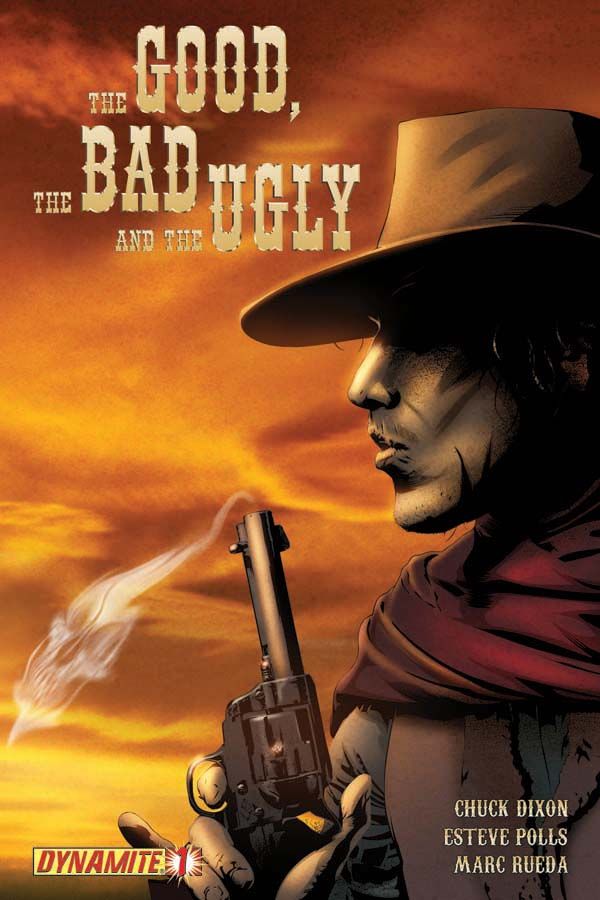In "The Good, the Bad and the Ugly" #1, Chuck Dixon and Esteve Polls try their best to replicate Sergio Leone's cinematic world and, in places, succeed, but never quite pull it off. But, they do come close.
Polls more than Dixon makes his mark here, providing gorgeous visuals that capture the grit and feel of Leone's films without actually replicating the look, which is an approach that always works better. Too often in works like this, more emphasis is placed on remaining 'true to the source' that it lacks any of the depth or feel of the original, but Polls captures that. One way in which he conveys a cinematic feel is in his page layouts as he uses, primarily, page-wide panels stacked upon one another like film stills. He only breaks from this layout briefly to great effect.
Together with Dixon, Polls also comes up with some very interesting and witty visuals, like the gun-coming-up-through-a-hole-in-the-floor moment in the opening pages. That maneuver genuinely seems like it was stolen from a deleted Leone scene and is pulled off in much the same way.
It's difficult to say what the plot here is, because this issue reads very much like the opening 20 to 30 minutes of "The Good, the Bad and the Ugly" where the main characters are all in different places, and will converge later. For now, the Man with No Name is a bounty hunter again, like he was in "For a Few Dollars More," and is on the trail of a bank robber by the name of Miles Devereaux. Elsewhere, a French colonel and his troops rob a mission, providing a vague allusion to Angel Eyes.
Dixon clearly knows his stuff as he is not afraid to have the Man with No Name act with overconfidence or encounter superior numbers that soon make him look a fool. He doesn't let the mystique of the character get in the way of the story, something that other writers might be tempted to do.
I am really blown away by Polls' art, though, which has a very classic look to it, rooting it within Western comics tradition, but, as I said, he captures the look of the Spanish sets of the films, and also infuses the characters with that dark meanness that the actors in the films had. Everyone there had a sordid look to them, even the supposed good guys, and Polls gives everyone here that same look.
As a special treat, Dixon provides a fantastic essay on the Spaghetti Western that looks at the subgenre, going beyond Leone, and plenty of film suggestions. He obviously knows his stuff, is paired with a great artist, and has delivered a solid first issue that seems to be leading somewhere interesting. I can't wait for the second.

